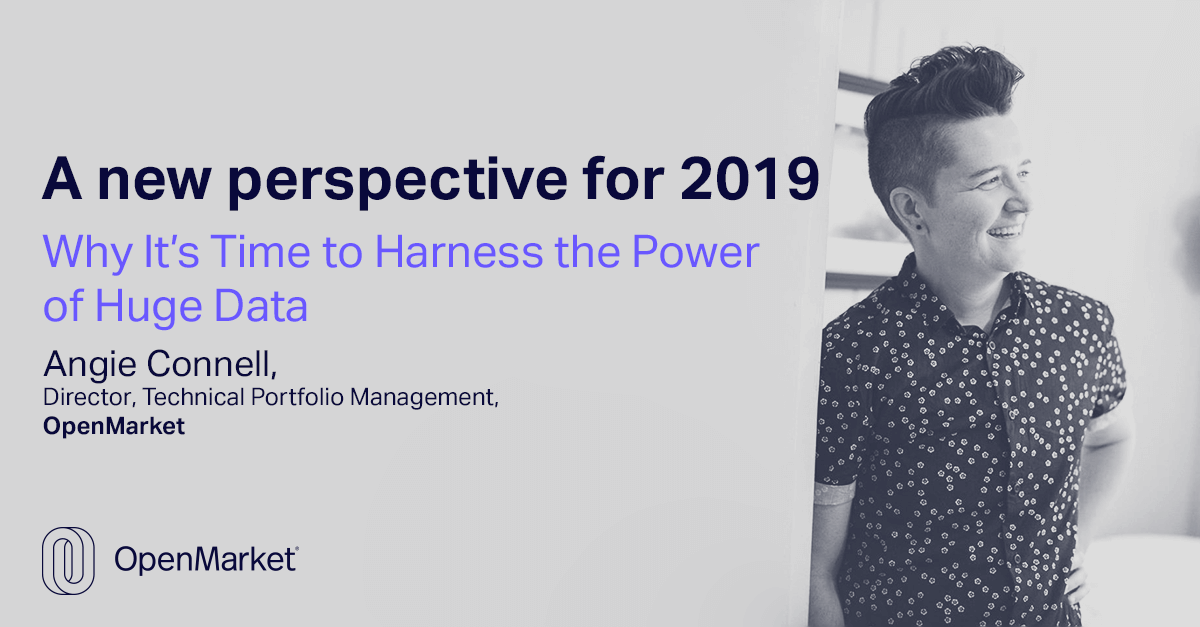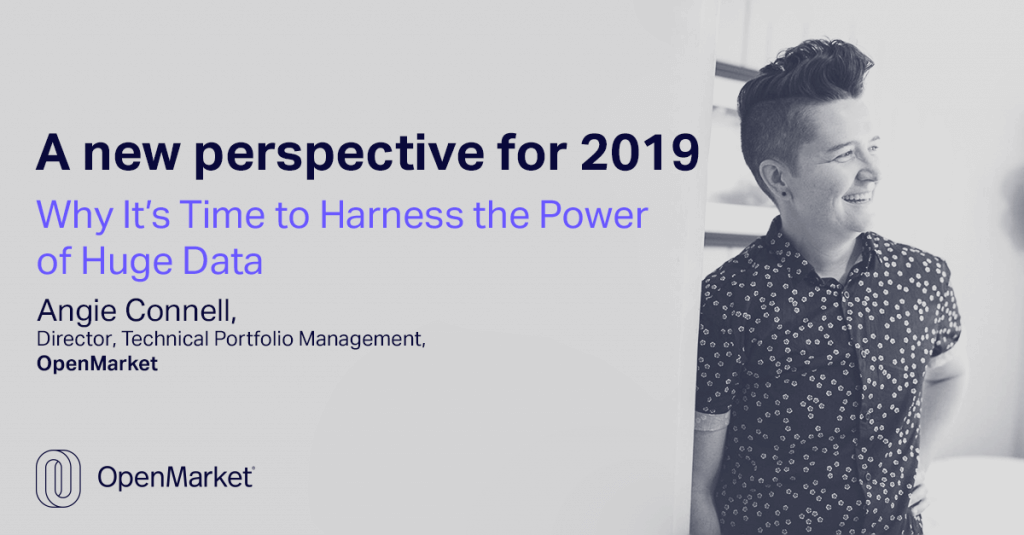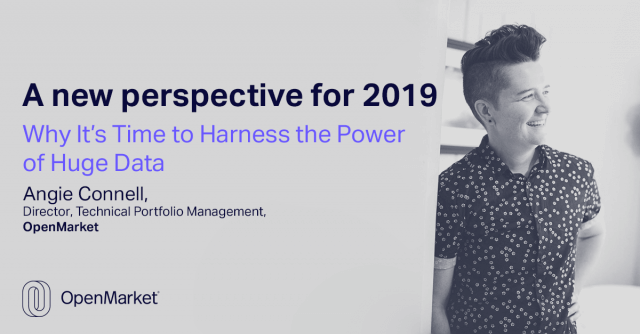OpenMarket – August 23, 2019



Data dominates many business conversations these days. We now generate so much information that the term “big data” is being replaced by “huge data”– which still doesn’t begin to describe the scale and speed at which it’s generated. By next year, it’s estimated that 1.7 megabytes will be generated every second for every person on the planet. That’s over 13 billion megabytes a second (or the equivalent of downloading the Spotify app more than 140 million times a day).
We’re faced with an almost inconceivable opportunity to source useful insights, trends and historical data, which can feel pretty overwhelming for many businesses. At OpenMarket, we realize the huge benefits of data for both our internal use and to add value to clients. And, just like our clients, we sometimes struggle to get the data to a place where we can analyze it and trust that it’s correct. But as wemove towards a truly data-driven future, breaking down these barriers is only going to become more crucial for success. This article presents some of the steps you can take, wherever you are on your data journey, to up your game and harness the true potential of your data.
The power of a single sources of truth
When we speak with clients, it’s clear that they’re sold on the benefits of data. But many find it challenging to get the information they need, and even then, they can’t necessarily trust that it’s correct. Their biggest challenge by far is getting a single view of the customer. Pockets of useful data are spread across every company but for the most part, they’re not well integrated. Different departments all have their own systems and processes for capturing and storing information, from finance and HR to marketing and sales.
Like many of our clients, we have data stored everywhere, and when we put it all together… well, the numbers don’t always add up. This often boils down to data definitions. For example, we can demonstrate the number of cases closed in Salesforce by our Support team, but should we exclude or include duplicate cases in that number?
To get around this, it’s useful to identify certified data sources and create data dictionaries that are easily accessible and understood. These should outline the contents, format and structure of your database, and how to use it effectively. That way, your staff know which sandboxes are safe to play in, and don’t present results that are pulled from outside the playground altogether.
Making the data accessible and actionable
As the world goes data mad, it’s also important to remember that we’re not just talking about a series of 1s and 0s. The power of data is people: the real human beings we’re generating insights about, and the people behind the screens collecting and making use of that information.
When we provide clients with information, we need to make it easy to understand. Not just for a technical data scientist, but for a brand manager wanting to learn about customer purchase behaviour, or a junior marketing assistant who needs to provide her boss with a report on SMS opens and engagement.
A key part of this is visualization. We want to help clients make sense of mobile messaging data by turning it into easy-to-understand visuals. But it’s not enough to build some pretty dashboards and slap a fancy-looking graph up on a screen. Working with data is a conversation. You need to be able to ask the right questions, interrogate the answers you get and identify what information is missing (which might just lead to more questions!).
One way we’re doing this is through basic dashboards. Customers can quickly determine trends related to message volumes, error codes and traffic patterns with just a few clicks or drill down by selecting a few filters. This provides a launching point for basic metrics, and we build on this with custom packages that get to the heart of what’s important to each customer. These might include in-depth short code analysis, analysing marketing campaign effectiveness, or providing carrier-specific information that can get lost in the more basic visualizations.
We’ve also embraced this internally, by transforming a weekly leadershipmeeting into a data-driven conversation. We’ve slowly added visualizations and metrics for each department, with the goal of tracking our most important indicators of success.
People often shy away from embracing data because it can seem so difficult to make sense of. But over and over again we see clients having ‘a-ha’ moments when we present them data they already had access to but just didn’t know to look at in the right context.
A data-driven future
Technology like the Internet of Things and machine learning will only increase the amount of data. In the mobile industry, we’re seeing this with the rise of RCS, which is set to revolutionize the sector and bring with it a whole new range ofdata capabilities. With deeper insights into how customers are engaging with mobile messages, businesses can really start to tailor communication to be more personal and relevant. This is beneficial for everyone. Customers get more empathetic, useful and positive experiences, and brands see a better return on investment.
But only a small percentage of companies are actually nailing their use of data and unlocking its true potential. It’s similar to whispers of stock picking when the market is climbing: there’s a lot at stake and many barriers to getting it right. I believe in a well-diversified portfolio approach, rather than trying to hit it big by picking the right stock and hoping for the best.
Start with the most easily available data, define the KPIs that are measurable from that information, identify the other goals on your wish list, and then create a plan to get the additional data you need to measure them. For instance, when reporting on Customer Support, you don’t just measure the number of cases closed. You also need to measure customer satisfaction, sales volumes, categories with aging cases, and an internal quality check – but these elements might come later, after you’ve got the first bit right.
The data conversation is never finished. Starting where you are, and with what you have, sets a path for stronger decision-making, while working to the next level of unlocking its potential. And the potential of data is only going to keep growing. Don’t wait to get started – or you’ll find you fall further and further behind.


